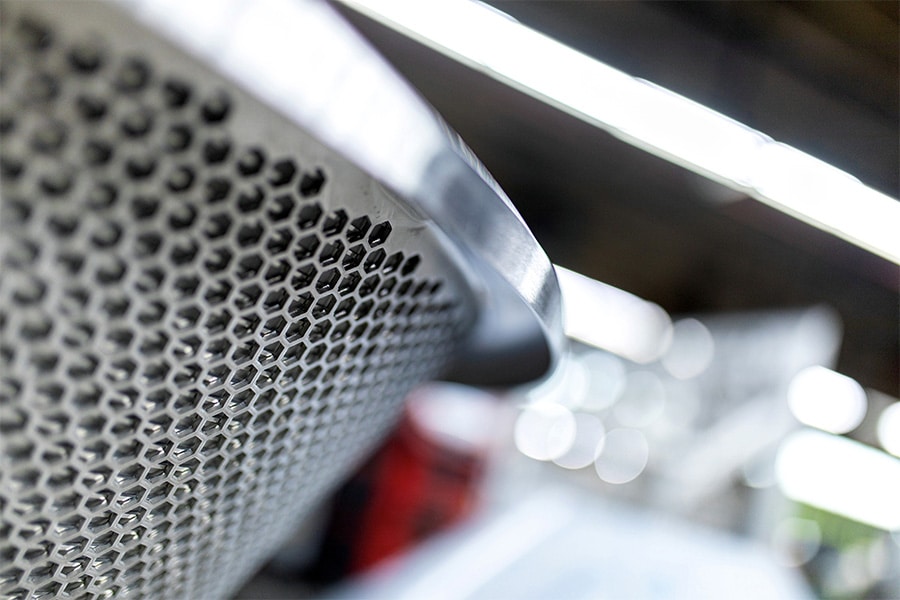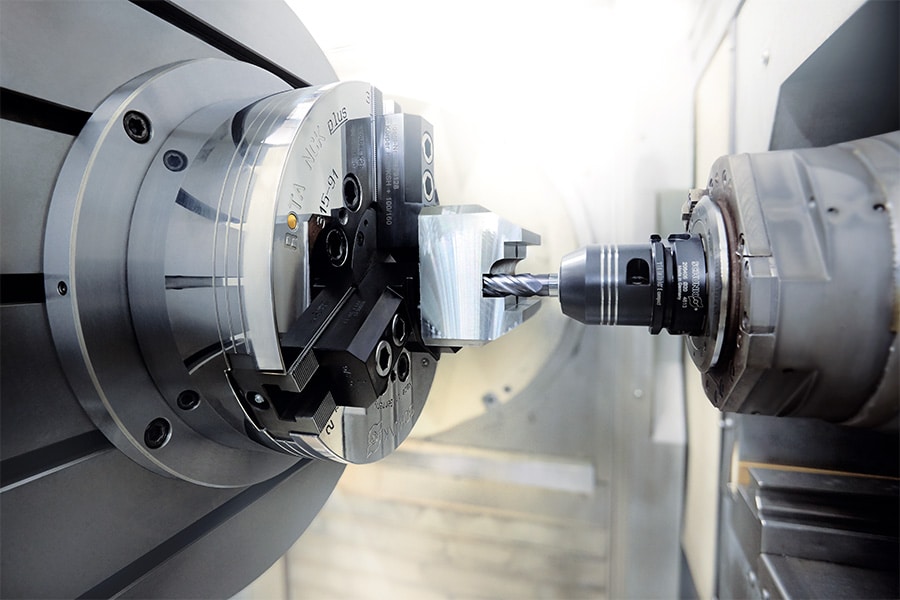
MRO tools in times of turbulent industrial economy
The metalworking industry has experienced both positive and negative periods of economic development in recent years.
This is often linked to the performance of several key industries, such as automotive, aerospace and oil and gas. However, there is one segment that seems to be weathering the storm regardless of the economic climate - Maintenance, Repair and Overhaul (MRO).
Regardless of whether times are good or bad, many industrial companies are constantly placing demands on production maintenance. Their primary goal is to find alternative options to keep costs down by reusing existing equipment or materials, repairing items or simply choosing a cheaper option to get the job done.
The latest report from business intelligence provider Visiongain states that the European MRO market reached $170 billion in 2019 and is expected to grow at a rate of two percent per year. https://www.visiongain.com/report/europe-maintenance-repair-and-overhaul-mro-market-report-2019-2029/
An important operation within MRO is drilling with hand-held drills, especially standard HSS (high-speed steel) drills, which represent the lifeblood of the segment. Dormer Pramet is a leading manufacturer of general purpose HSS and HSS-E drills, with more than 100 years of experience in providing cutting tools to meet the MRO needs of companies.
The most popular ranges within the Dormer range include the short and extra short drills for use in hand drills, column drills and other hand-operated machines. The extra short drills, for example, feature shorter spiral grooves to increase rigidity and precision. This makes them ideal for tight spaces and hand operations that require stability. In addition, the shorter length reduces deflection, fracture and drift.
When performing handheld applications, however, drill bit length is not the only important criterion when choosing the right cutting tool. Consistent and predictable performance is crucial, which means that proper geometry and torques are paramount.
Torque
The drilling torque is mainly determined by workpiece material properties, diameter, drilling geometry and machining parameters. From the machining parameters, the feed is the most important factor to consider because the cutting speed has little influence on the development and magnitude of cutting forces.
On modern CNC machines, drilling torque is rarely a limiting factor, but on light machines, column drills and hand drills, it is a primary consideration.
When torque becomes a limiting factor, a reduction in feed per revolution is required or a change to a two-step operation. This means pre-drilling with a smaller drill (≈0.2xD), followed by drilling with the desired diameter.
Point geometry
In general, maximizing drilling speed while maintaining the required hole quality is often preferred in the CNC machining environment, as it can lead to greater cost savings. For the MRO technician, however, safety and reliability are of paramount importance. Therefore, it is important to understand the relationship between the characteristics of the drill point geometry and the allowable drilling depth.
For example, the chip angle is measured at the circumference and is approximately equal to the helix angle there. However, it changes along the length of the main cutting edge, becoming smaller and eventually negative near the center line of the drill bit, the core. This improves the sharpness of the drill bit, requiring less torque.
Like the chip angle, the clearance angle also changes in the radial direction. But where the chip angle decreases from the peripheral angle to the core, the clearance angle increases. This helps in smooth passage during manual operations.
Also, the transverse cutting edge is the first point of contact, pressing into the material. However, it does not cut into the working material, but displaces it as it penetrates. As a result, the transverse cutting edge creates most of the thrust applied. The geometry of the transverse cutting edge, along with the point angle, determines the centering properties that determine hole position, size and straightness.
Versatile cutting tools
A cutting tool with these features is the popular Dormer A100 HSS spiral drill bit. Suitable for drilling a variety of materials, including steel, aluminum and stainless steel, the versatile A100 is ideal for handheld applications. Its strong 118-degree standard tip is easy to resharpen, and a steam oxide finish prevents workpiece material from sticking to the cutting edge.
The legendary Dormer A002 spiral drill bit, now more than 20 years old, is also still sold in large quantities around the world. With smooth cutting action and consistently high quality, in a wide variety of materials, its self-centering split point offers excellent positioning accuracy.
Its lesser-known cousin, the A108, features a split point and larger helix angle specifically for machining stainless steel. A sharp geometry limits the onset of self-hardening and a steam-hardened surface treatment helps retain cutting fluids and prevents material from sticking to the cutting edge. Manufactured from M2 grade HSS, which is one of the toughest available, make the A108 ideal and the absolute first choice for manual stainless steel machining.
The Dormer A777 and A117 short and extra short HSS cobalt drills offer another option for drilling by hand. Their heavy-duty design makes them suitable for machining harder materials with higher tensile strength, such as tool steels.
A 135-degree split-point design aids self-centering when used by hand and reduces the push force required. A bronze oxide finish prevents workpiece material from sticking to the cutting edge during use.
Manual operations
In addition to standard short drills, Dormer Pramet has a range of cutting tools for other manual applications. Spot weld drills are widely used in MRO applications, especially when replacing sheet metal parts welded together. Removing a spot weld with a standard spiral drill bit can be messy and dangerous because the drill bit can expire on the hardened, uneven surface.
However, the A723 HSS - cobalt spot weld drill bit is available in several standard sizes to meet common applications in the automotive and trailer repair industries. A special lip and centering tip ensure accurate centering by preventing drill bit drift. In addition, a sharp outer corner simultaneously cuts the softer material around the spot weld.
A strong core design provides strength for better penetration under tough conditions and ensures safe and reliable use. The short spiral design increases rigidity for hand-drilling thin panels and sheet metal, further increasing stability.
Finally, HSS sheet metal drills are available in a variety of standard sizes to accommodate common rivets, screws and bolts. Suitable for drilling thin sheet metal and panels, the A123 series has a 120° point geometry with a short flute for easy penetration and rigidity in portable applications.
The thin core of the tip provides excellent self-centering properties, while the steam tempering surface improves performance and reduces the likelihood of a built-up cutting edge. An economical double-sided version (A119) is also available, which helps reduce inventory costs.
Dormer Pramet's wide range of economical hole-making tools is supported by additional capabilities, such as thread tapping and carbide burrs. This demonstrates the company's commitment in the MRO segment, allowing it to develop regardless of market conditions.
For more information about Dormer Pramet, visit www.dormerpramet.com or contact your local sales office.





